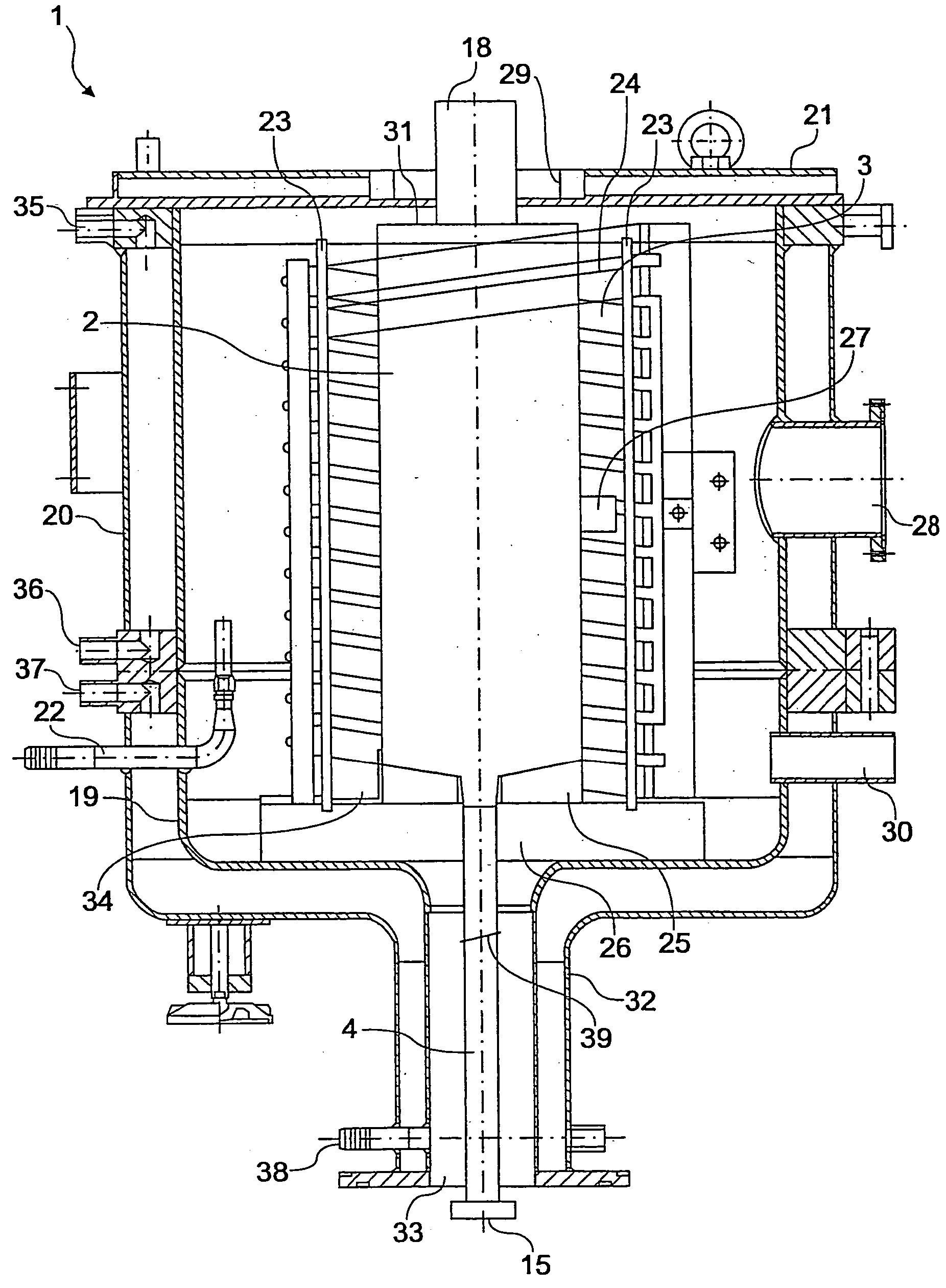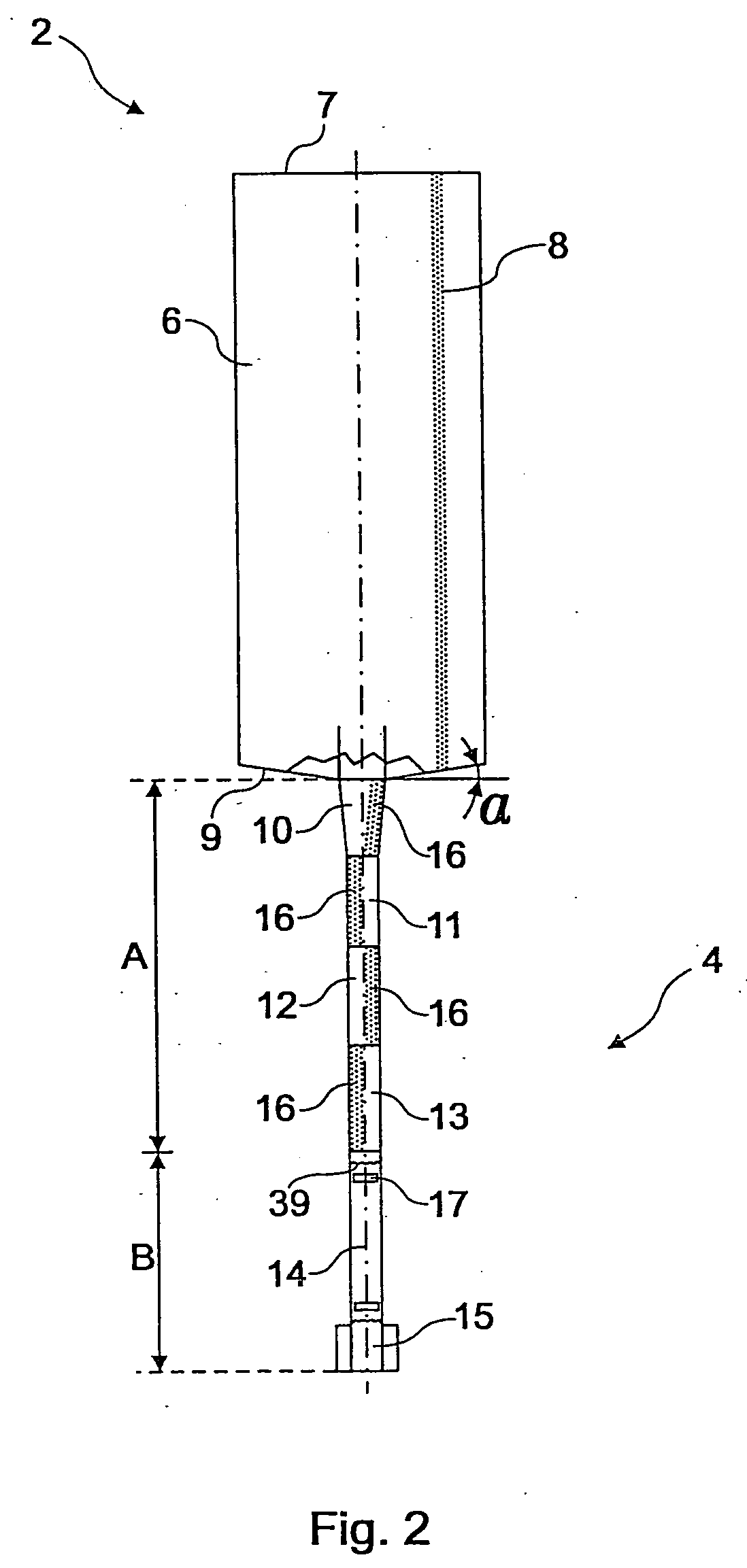Device and method for the production of high-melting glass materials or glass ceramic materials or glass material or glass ceramic material
a technology of glass ceramic materials and high-melting glass, which is applied in the direction of glass making apparatus, glass shaping apparatus, furnace types, etc., can solve the problems of combustible, high cost of double wall structure of crucible, and greatly restricted service life of the device at temperatures as high as this, and achieves better properties and suitable quality.
- Summary
- Abstract
- Description
- Claims
- Application Information
AI Technical Summary
Benefits of technology
Problems solved by technology
Method used
Image
Examples
embodiment example 1
[0112] The following conditions were selected for the glass material 8228 (see Table 1):
[0113] The following Table 2 summarises the weighed portions of the raw materials used for 26.25 kg of the glass material with the composition 8228 according to example 1 (8228) in Table 1:
TABLE 2OxideMa %Raw materialWeighed portion [g]SiO282.1Silica flour18570B2O312.3Boric acid4952Al2O35.3Aluminium hydroxide1845SnO20.2Tin (IV) oxide45
[0114] The properties of the molten glass are also show in example 1 (8228) in Table 1. For ease of handling, the mixture was divided into three batches and weighed or mixed individually. After mixing, the mixture was moistened with deionised water (3×800 ml) and then mixed again. This was in order to reduce dust formation in the mixture on introduction. Any large lumps of mixture that formed after moistening were then removed by screening and comminuted. This reduced the formation of inclusions in the mixture and seeds in the glass.
[0115] The average temperatur...
PUM
| Property | Measurement | Unit |
|---|---|---|
| diameter | aaaaa | aaaaa |
| diameter | aaaaa | aaaaa |
| diameter | aaaaa | aaaaa |
Abstract
Description
Claims
Application Information
 Login to View More
Login to View More - R&D
- Intellectual Property
- Life Sciences
- Materials
- Tech Scout
- Unparalleled Data Quality
- Higher Quality Content
- 60% Fewer Hallucinations
Browse by: Latest US Patents, China's latest patents, Technical Efficacy Thesaurus, Application Domain, Technology Topic, Popular Technical Reports.
© 2025 PatSnap. All rights reserved.Legal|Privacy policy|Modern Slavery Act Transparency Statement|Sitemap|About US| Contact US: help@patsnap.com



